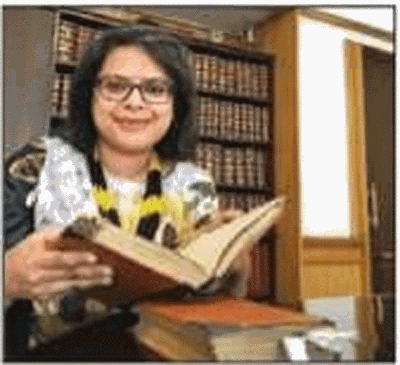Kolkata:
A research on the treasure trove of tea in India has earned an associate professor of art history at Syracuse University, with roots in Kolkata, the prestigious National Endowment for the Humanities Fellowship 2016.
Romita Ray is not oblivious to the crisis ailing the tea industry, but she is working to strike a balance between the desolation associated with the sector and the shining aspect of the golden brew. “These (starvation deaths at tea estates) are a reality of the industry, but one needs to balance the bleakness with identifying tea as a botanic exotic. After all, it’s a living history that continues to connect Kolkata and Britain even after so many years,” said the Loreto House alumna who migrated to the US many years ago.
Her unique research is set to culminate in a book, tentatively titled ‘From Two Leaves and a Bud: The Visual Cultures of Tea Consumption in Colonial and Modern India’.
This will be the second literary attempt by the Yale University scholar, who specializes in art and architecture of the British empire in India, her earlier work being ‘Under the Banyan Tree: Relocating the picturesque in British India’.
Her passion for the evergreen shrub seems to run in the family, her great grandfather, Tarini Prosad, being the founder chairman of the Indian Tea Planters’ Association in Jalpaiguri.
Her current project, funded by the exalting and year-long National Endowment for the Humanities Fellowship (NEH) 2016, will be her second literary attempt. NEH is one of the largest funders of humanities programs in the United States, and highly competetive.
Ray now is set to deliver her first “tea talk” in Kolkata on Monday at Victoria Memorial Hall, when she is going to deliver a lecture on ‘Botanical treasure, ornamental wonder: Aestheticizing tea in Britain and Colonial Calcutta’.
She will focus on how Chinese tea, once a botanical novelty in the 18th-century Britain, crystalized into a paradigm of the “tea time”, a fashionable culinary ritual in the 21st century Britain.
“Calcutta’s (‘Kolkata’ doesn’t roll off Ray’s tongue so easily) connection with tea goes back to the 18th century when East India Company started the Canton tea trade,” said Ray, explaining why she had to be in Kolkata, away from her classes in the US, for her research.
“My book is about the visual cultures and landscapes… it is about consumption of tea in colonial and post-colonial India. It looks at the tea plant as an ornamental curiosity, the tea planter (British and Indian) as a pioneer figure whose portraits are rarely discussed, and the tea plantation as a multi-layered landscape of cultivation and leisure.”
The book will not be launched soon. “Academic books take a long time to research and write,” Ray said. The task involved extensive research at museums, archives, private collections, tea estates and libraries in the UK, India and Sri Lanka.
Being the epicentre of the Indian tea industry, Kolkata houses the Tea Research Association, Indian Tea Association and the Tea Board, along with auction house J Thomas, and even tea companies McLeod Russell and Goodricke are headquartered here.
This is where she will find the East India Company records.
“The Shibpur botanic garden is a mine of information,” said Ray, who has visited Assam, Darjeeling and the Dooars and intends to travel to south India as well as Sri Lanka.
She also intends to dig out family records with the help of multi-generations of tea families.
source: http://www.timesofindia.indiatimes.com / The Times of India / News Home> City> Kolkata / April 10th, 2016

